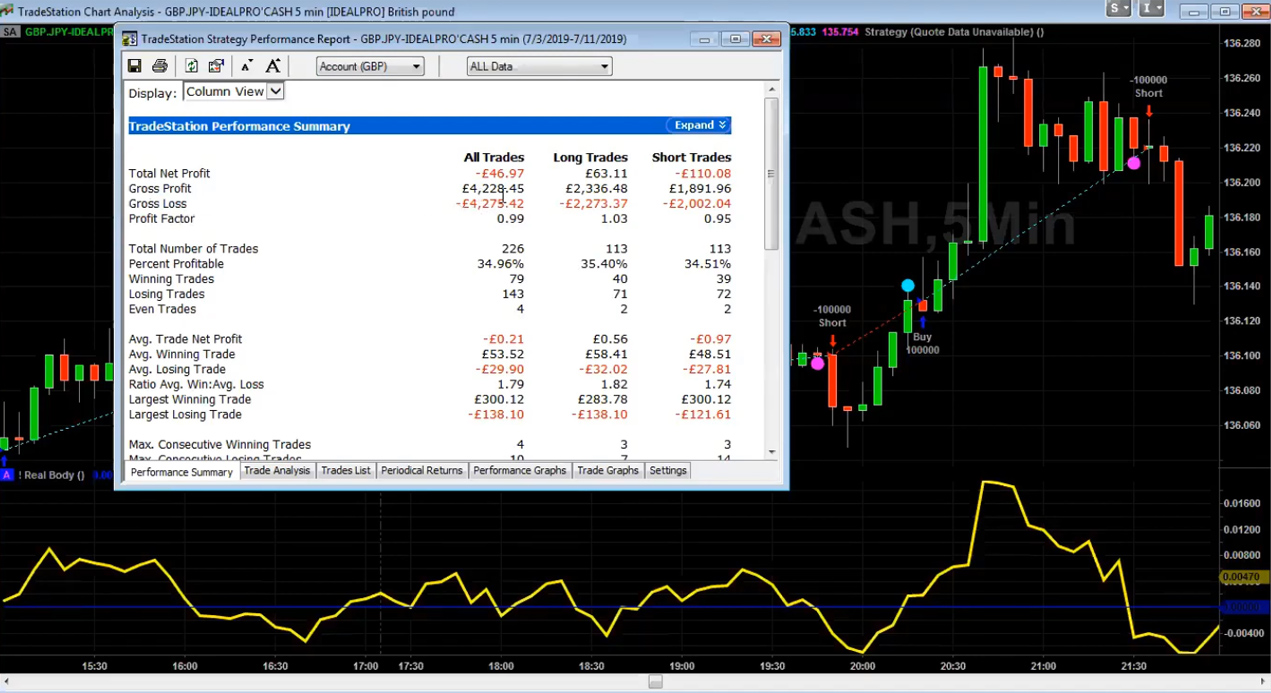
For over three decades, EasyLanguage has been one of the most widely used languages amongst retail traders for coding algorithmic trading strategies and developing custom indicators.
Created by TradeStation Securities, this versatile programming language has paved the way for traders to develop and optimise their strategies in a way that is both accessible and offers capabilities to match those of institutional platforms.
In this article, we’ll explore the origin, unique features, and some of the limitations of EasyLanguage.
The Foundation of EasyLanguage
A proprietary programming language developed by TradeStation, EasyLanguage was initially intended to empower traders without specialized computer training. Developed in the late 1980’s, its foundation draws inspiration from the simplicity and readability of Pascal, a language known for its user-friendly syntax and strong typing system.
However, EasyLanguage has evolved into a domain-specific language designed exclusively for financial trading. This evolution was guided by the pioneering efforts of TradeStation’s founders, Bill and Ralph Cruz, who sought to create a tool that traders could use to design, test, and automate their trading strategies.
A Simpler Way to Code
One of EasyLanguage’s standout features is its user-friendly nature.
Unlike other languages popular in finance at the time such as FORTRAN, which demanded extensive coding knowledge, EasyLanguage was developed with traders in mind. Its syntax resembles plain English, enabling traders to decipher code lines intuitively and with minimal training. This simplicity drastically reduces the need for extensive learning and reference materials, and has ultimately lead to the widespread adoption and popularity of EasyLanguage within the trading community.
In fact, while TradeStation initially introduced EasyLanguage, it didn’t take long for other trading platforms to recognize its potential. Many began to support scripts written in EasyLanguage and aimed to enhance compatibility with TradeStation’s scripts. Even proprietary high-end automated trading platforms have embraced elements reminiscent of EasyLanguage, underscoring its pervasive influence in the industry.
Simplicity and Flexibility
EasyLanguage offers a unique balance of customization and accessibility. With thousands of built-in keywords, functions, and properties, traders can design and create virtually any market analysis, scanning, or order management tool. This flexibility allows traders to tailor their strategies and indicators to suit their specific needs and preferences.
EasyLanguage is designed to describe trading ideas in plain English-like expressions using terms and phrases familiar to traders who are not programmers. Does this mean that everything you might want to do can easily be achieved in EasyLanguage? No. But most basic ideas (and if you’ve read much of the strategy research on this site you’ll know that this these tend to be the more robust ones) can be implemented without the need to hire a specialist programmer.
Whether you’re a seasoned developer or new to coding, EasyLanguage’s intuitive approach is geared towards helping you to translate your trading ideas into powerful custom indicators and strategies.
Third Party Resources
Because its use is so widespread, EasyLanguage opens the door to a whole host of third-party resources, offering hundreds of additional strategies, indicators, and functions developed by various third-party contributors such as ourselves. This extensive pool of resources further enhances the capabilities of both EasyLanguage and the TradeStation platform.
Compatibility with Other Platforms
In 2005, a new platform called MultiCharts was developed. This aimed to retain all the benefits of TradeStation whilst removing some of the limitations it had at that time, especially around portfolio back-testing. Naturally, MultiCharts also developed a variant of EasyLanguage. The developers analysed EasyLanguage syntax, simulated script execution, and tested hundreds of unique scenarios to ensure seamless integration with PowerLanguage, MultiCharts’ proprietary language.
While complete compatibility with evolving languages is challenging, MultiCharts has achieved the highest level of compatibility possible. It’s developers conducted careful testing of more than 2,000 EasyLanguage indicators and strategies, scanning for any possible issues. The result is impressive—up to 99% of your EasyLanguage strategies and indicators will work seamlessly in MultiCharts, producing the same results as in TradeStation.
This robust compatibility statistic is backed by extensive testing and collaboration between MultiCharts and TradeStation, providing traders with confidence in using EasyLanguage across platforms.
Wider Applications
EasyLanguage doesn’t just stop at creating custom indicators and strategies. It extends the ways traders can view global real-time and historical market data, along with account, position, and trade manager information. Traders can explore a wide range of trading and technical analysis tools, including:
- Indicators
- ShowMe Studies
- PaintBar Studies
- ActivityBar Studies
- ProbabilityMap Studies
- Trading Strategies
TradeStation can store an unlimited number of these analysis techniques, enabling traders to switch between different tools seamlessly. EasyLanguage also facilitates the import and export of studies from one computer to another, streamlining the sharing of custom tools among traders.
Even those traders who don’t intend to write complex indicators or strategies using EasyLanguage can benefit from a basic working knowledge. Many indicators and strategies feature input parameters that utilize simple EasyLanguage statements, allowing traders to modify alert and trading criteria or add additional calculations.
Conclusion
In summary, EasyLanguage’s enduring simplicity, accessibility, and widespread adoption have cemented its position as an indispensable tool for traders in the financial markets.
Its user-friendly approach allows traders to harness programming power without the need for extensive technical expertise. As EasyLanguage evolves alongside the dynamic financial trading landscape, it remains a trusted and valuable asset for traders worldwide. Its integration of external DLLs and extensive library of third-party resources make it a unique language tailored specifically for the financial trading domain. And its compatibility with other platforms, in particular MultiCharts, extends its application far beyond TradeStation.
